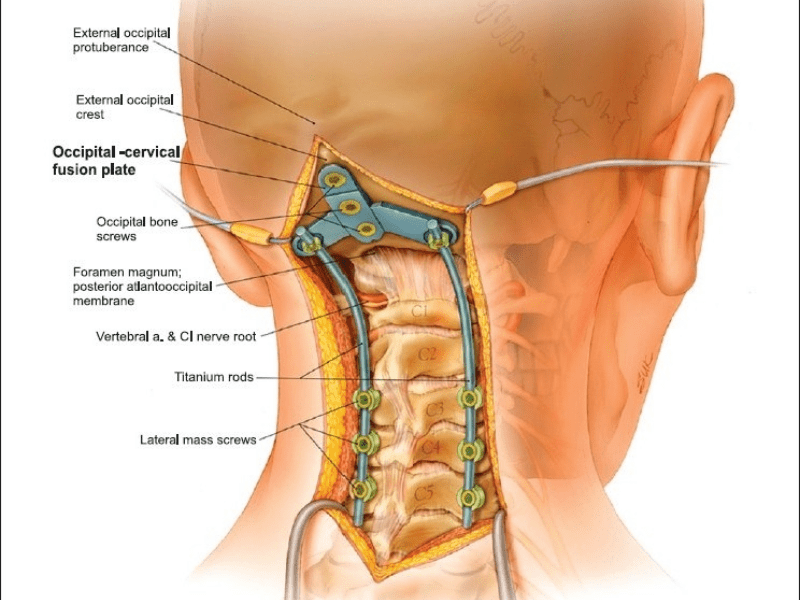
OCCIPITOCERVICAL
PROBLEMS
Cervical Treatment in Lucknow
Occipitocervical problems can be a complex and challenging condition that affects the neck and head. The occipitocervical area is the region where the skull meets the upper cervical spine, and any issues in this area can cause a range of symptoms, including pain, stiffness, and mobility problems. However, with the right treatment and care, many people with Cervical treatment are able to find relief and regain their quality of life.
The most common cause of occipitocervical problems is injury or trauma, such as whiplash or a sports injury. Other causes can include degenerative conditions, such as arthritis, or structural abnormalities, such as a malformed vertebrae. In some cases, occipitocervical problems may be present from birth, but symptoms may not develop until later in life.

Symptoms of occipitocervical problems can vary depending on the underlying cause and severity of the condition. Common symptoms include neck pain, headaches, stiffness, and difficulty moving the head or neck. In more severe cases, occipitocervical problems can also cause nerve damage, weakness, and even paralysis.
Cervical Treatment in lucknow, will depend on the underlying cause and severity of the condition. Conservative treatments, such as physical therapy, pain management, and lifestyle modifications, may be effective in managing symptoms for some people. In more severe cases, surgical intervention may be necessary to correct the underlying issue and alleviate symptoms.
If you are experiencing symptoms of occipitocervical problems, it is important to seek medical attention right away. Your healthcare provider can perform a physical exam and order imaging tests to determine the cause of your symptoms. With the right diagnosis and treatment plan, it is possible to manage occipitocervical problems and regain your quality of life.
